Osmoregulation and Thermoregulation
1/24
There's no tags or description
Looks like no tags are added yet.
Name | Mastery | Learn | Test | Matching | Spaced |
|---|
No study sessions yet.
25 Terms
What is osmoregulation?
Regulation of solute concentration/water balance
What are osmoconformers?
animals that allow their internal solute concentration to fluctuate with their external surroundings (isotonic to their environment). They don't try to maintain constant internal solution concentrations. These tend to be marine organisms. A disadvantage of this is that cells inside the body may not have the ideal solute concentration for body processes
Examples: squids and sea squirts
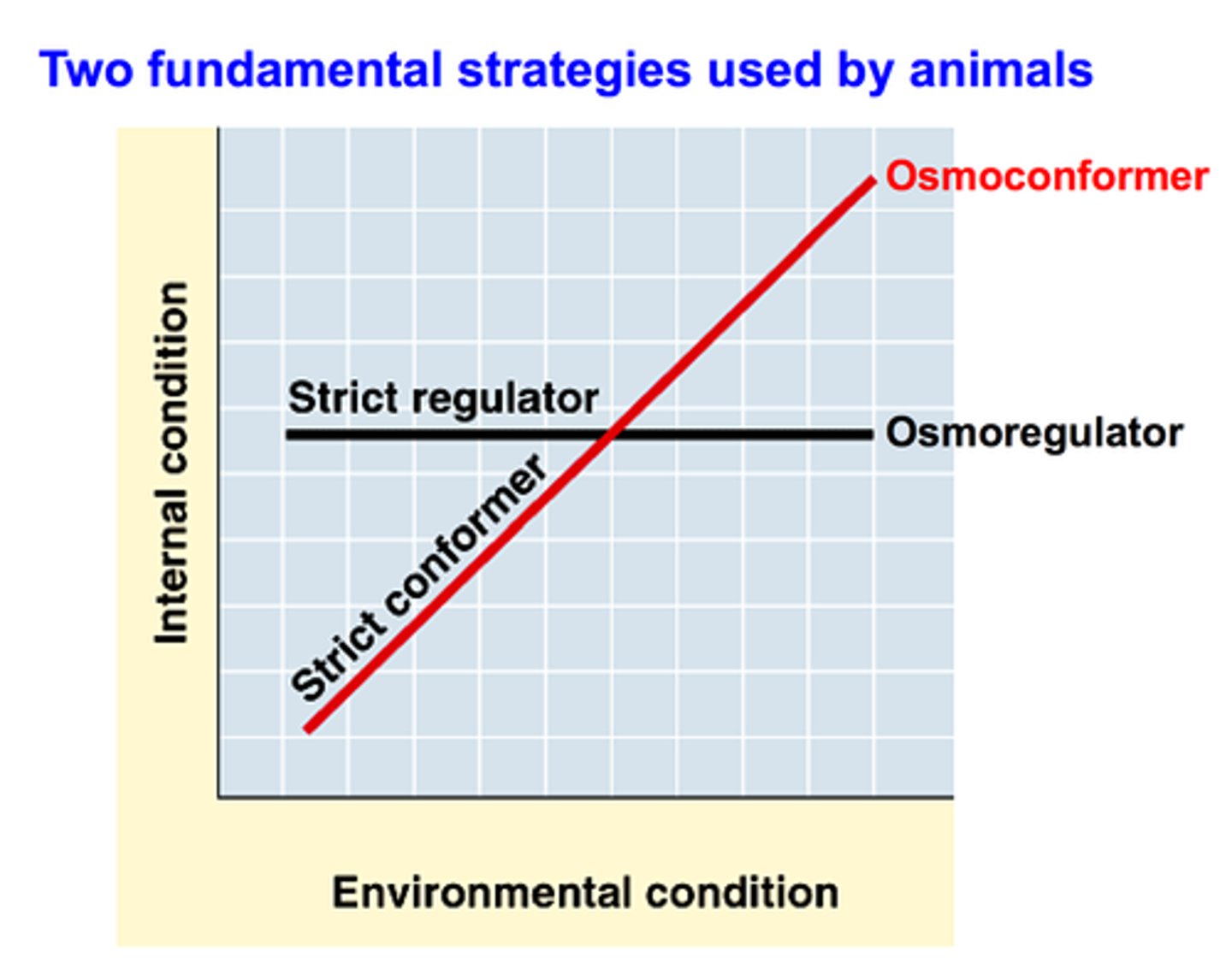
What are osmoregulators?
animals that maintain water balance internally despite external change. they expend energy to control water uptake and loss in a hyperosmotic or hypoosmotic environment. Mammals. Disadvantage: requires a lot of energy and complex feedback loops.
Examples: humans and elephants
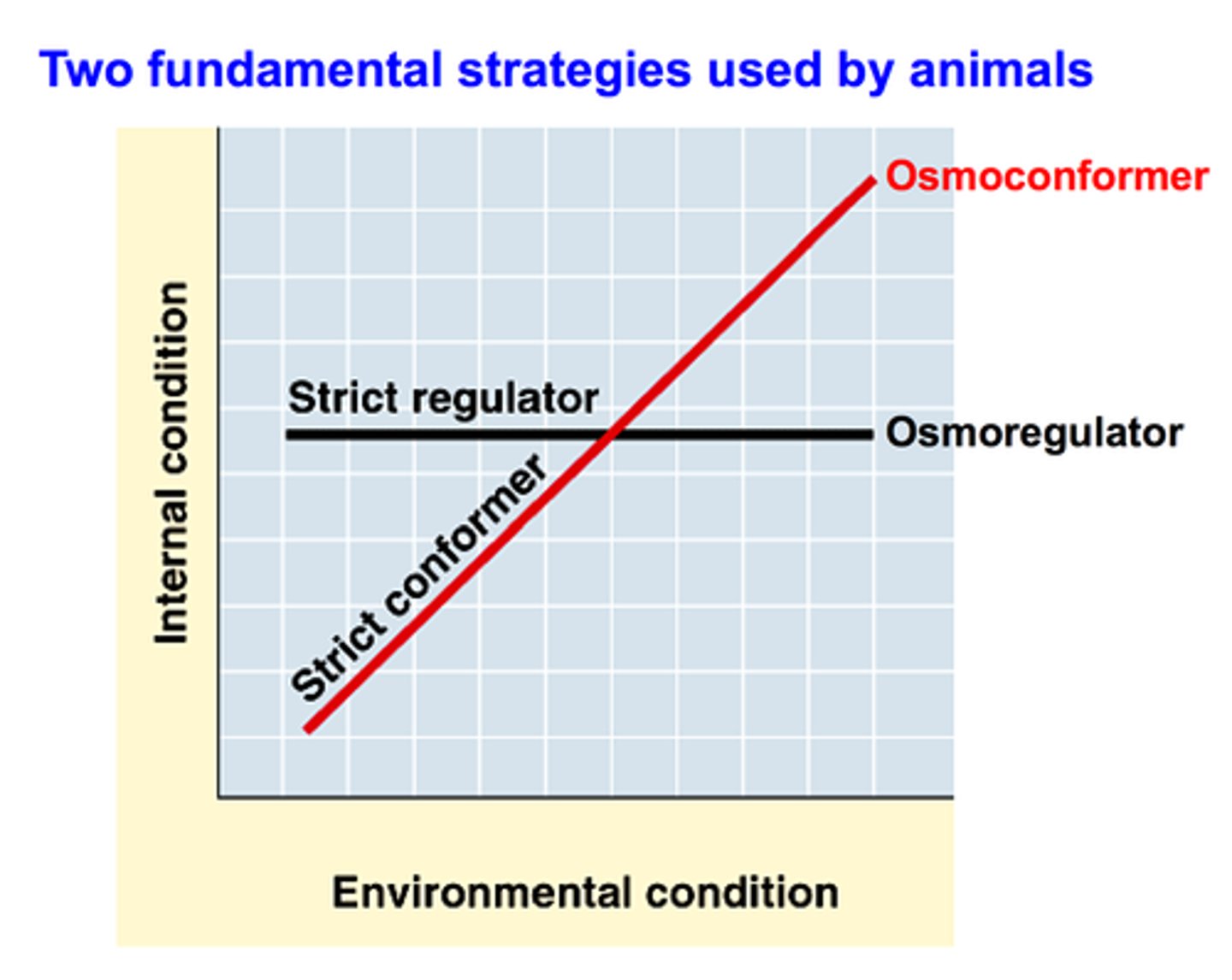
In osmoregulators, what is water balance of the blood regulated by?
Negative feedback loops
What happens when water levels in the blood are low?
The hypothalamus detects higher concentration of solutes in blood. This stimulates feelings of thirst which prompt the consumption of water and the posterior pituitary releases more ADH which causes the kidneys to retain water reducing the water loss in urine (darker colored urine). this restores blood water to its homeostatic range and removes the stimulus for thirst and water retention.
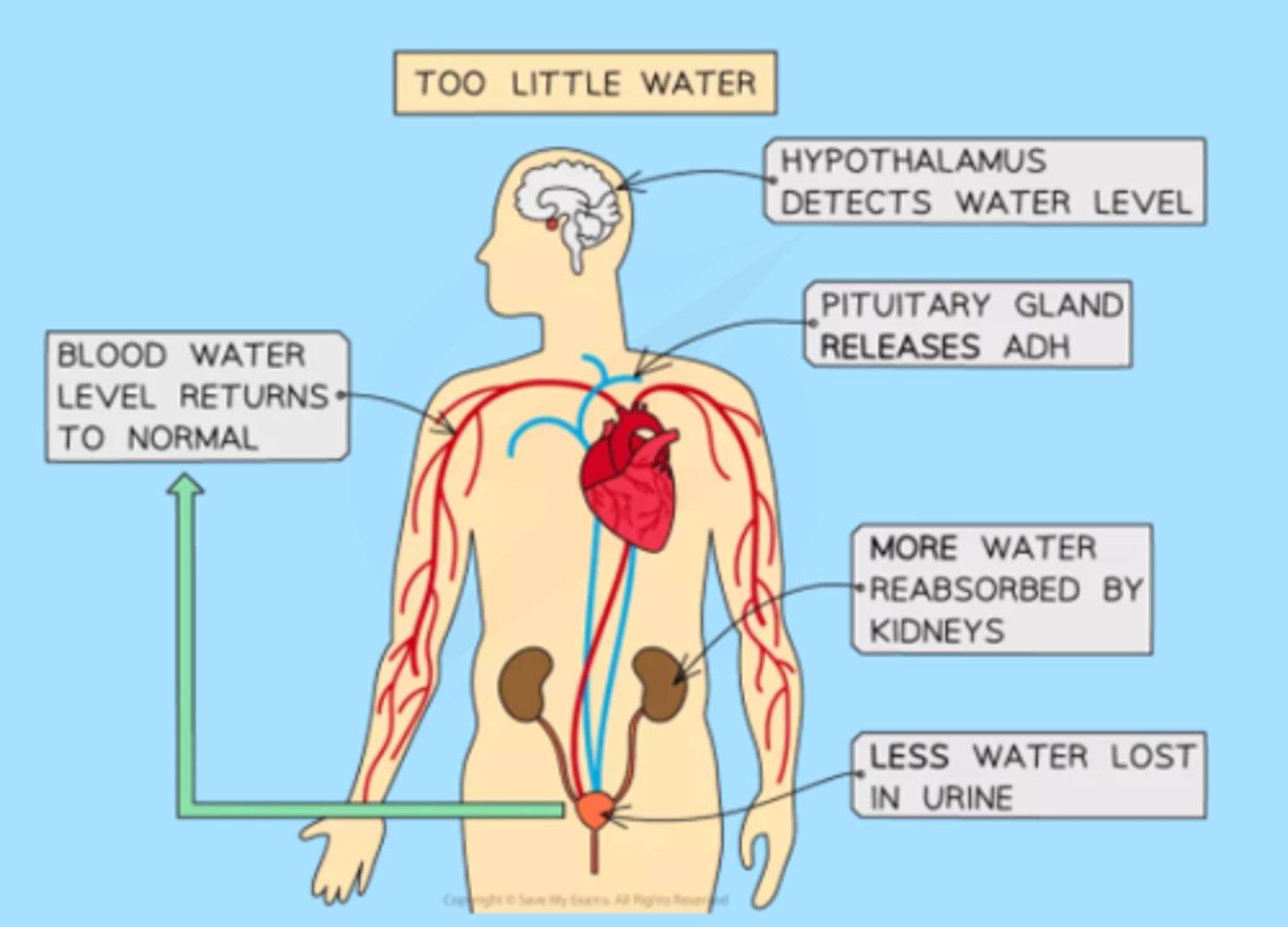
What happens when water levels in the blood are high?
The hypothalamus detects lower concentration of solutes in blood. It sends signals to the kidneys to pass more water in the urine. this restores blood water to its homeostatic range and removes the stimulus for increased urination.
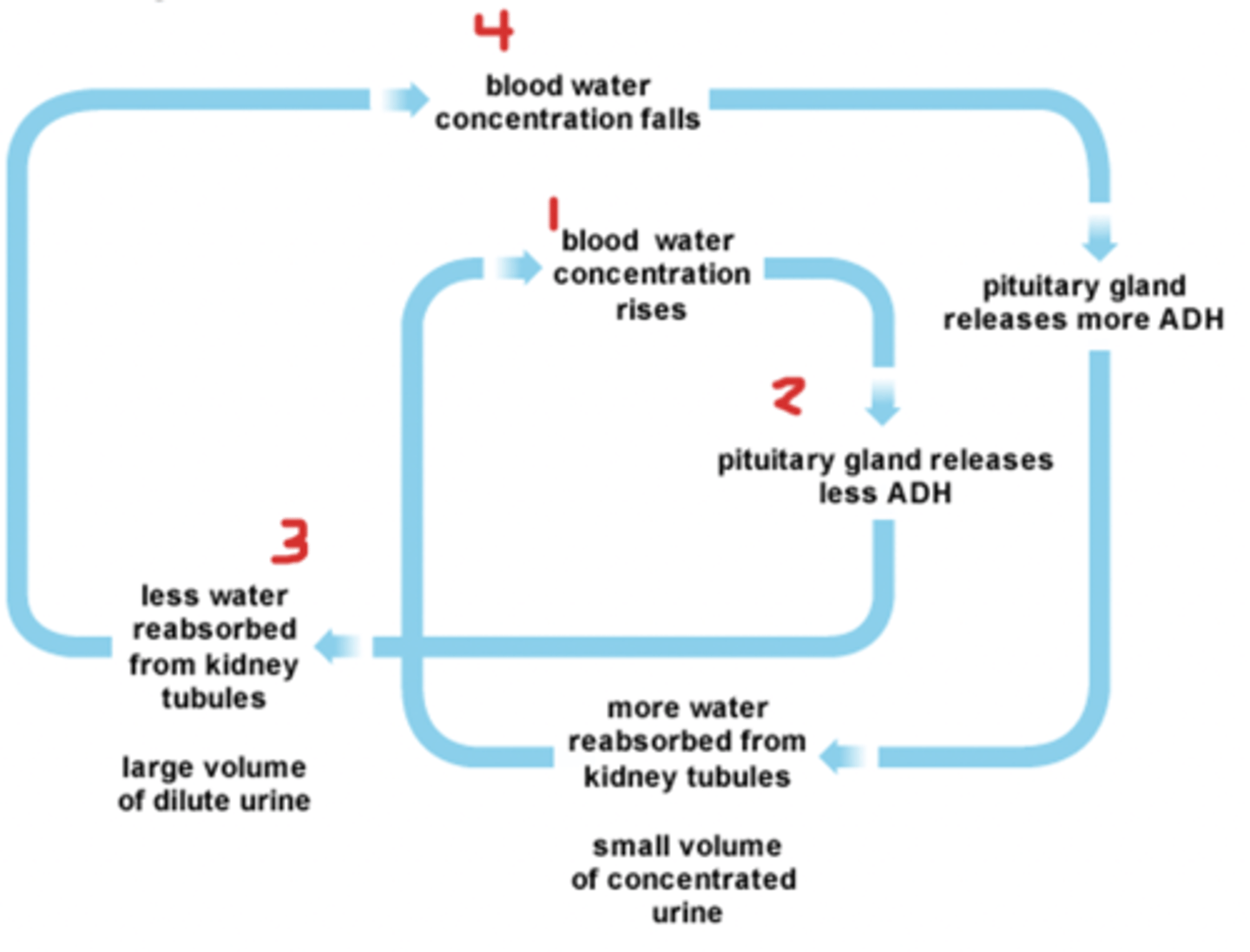
What is thermoregulation?
How animals maintain body temperature in a normal range
Do all organisms thermoregulate? If so, where does the source of heat come from? Why is it necessary for all animals to thermoregulate?
All organisms thermoregulate, but the source of heat in thermoregulation varies across different organisms. Animals need thermoregulation to maintain enzyme function and membrane fluidity
What are ectoterms? Where do they primarily derive body heat from? What else are they called?
animals that derive body heat from external sources (primarily from the sun)
cold-blooded

Why must most ectoterms depend on the sun to derive body heat?
They are slender (no blubber or fat) and hairless organisms that struggle to keep themselves warm, so they must depend on external factors
What happens everytime metabolism proceeds?
Energy is expelled and along with that energy comes heat
What are endoterms? Where do they primarily derive body heat from? What else are they called?
they derive body heat from internal sources (primarily from metabolism)
warm-blooded
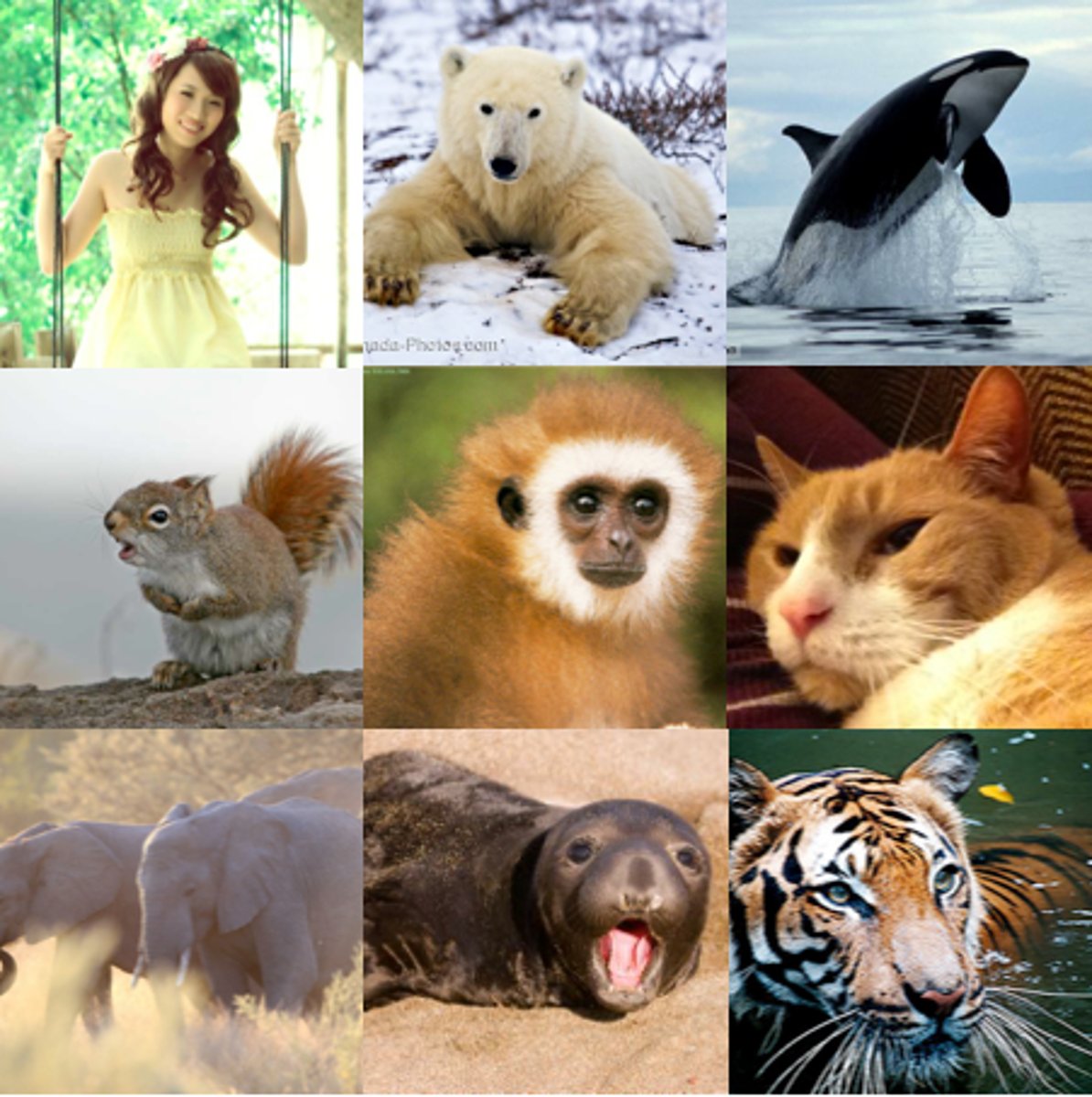
Who need to eat more? Ectoterms or endoterms?
Endoterms to support cellular metabolism and generate heat
In (), body temperature is regulated by negative feedback loops
endoterms
What happens in a fever?
Body temperature increases in order to kill pathogens, however in that process the enzymes in our body become slightly inhibited which is the reason we feel lousy when we have a fever
What happens when body temperature increases?
the brain sends signals to the skin cells to induce sweating which stimulates evaporative cooling and sends signals for blood vessels to dilate (vasodilation) which increases heat exchange between the body and environment. These return body temperature to its homeostatic range and removes the stimulus for evaporative cooling.
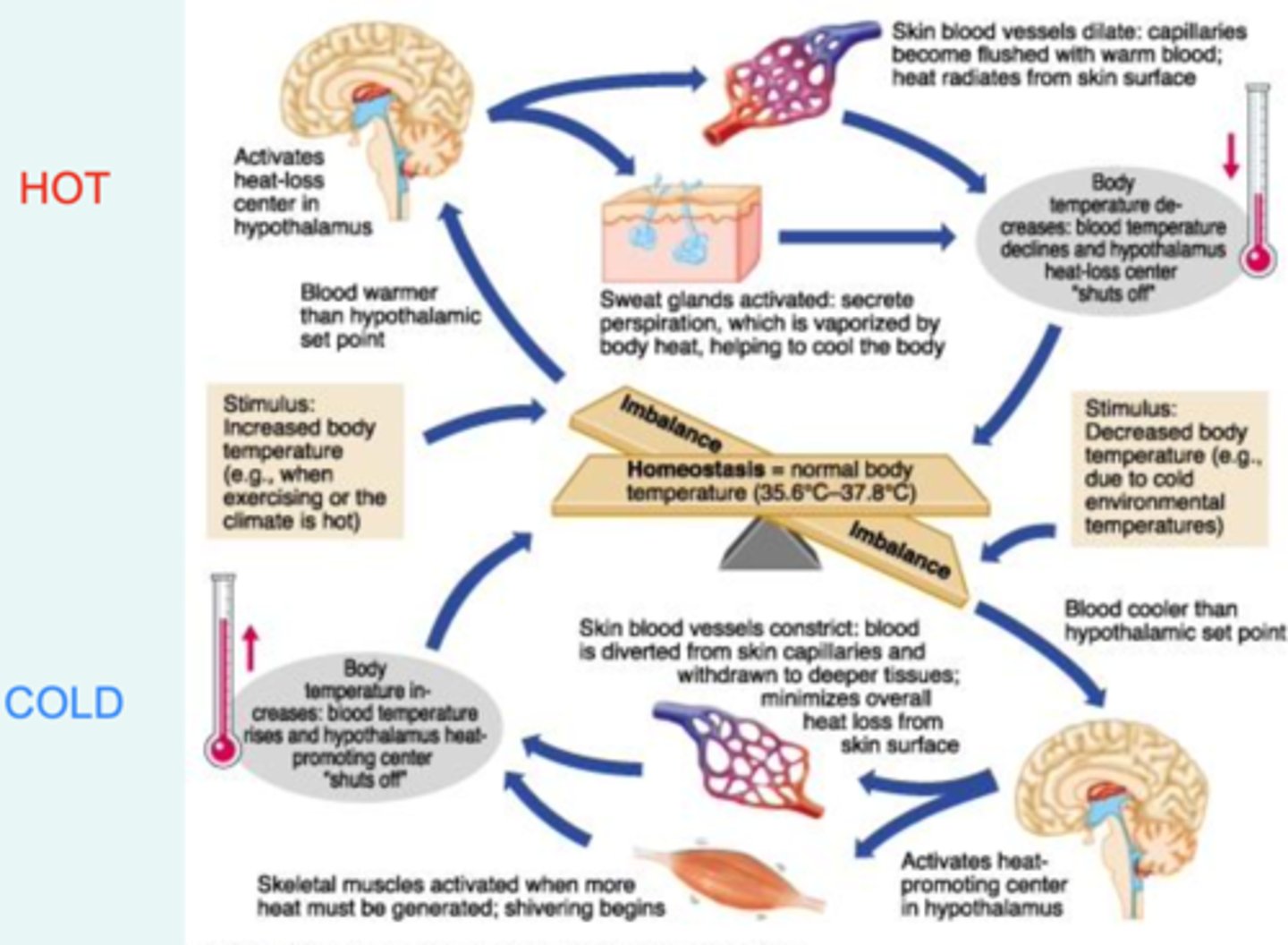
What happens when body temperature decreases?
the brain sends signals to the muscle cells to induce heat generation (thermogenesis) which stimulates shivering and sends signals for blood vessels to constrict (vasoconstriction) which decreases heat exchange between the body and environment. These return body temperature to its homeostatic range and removes the stimulus for heat generation and retention.
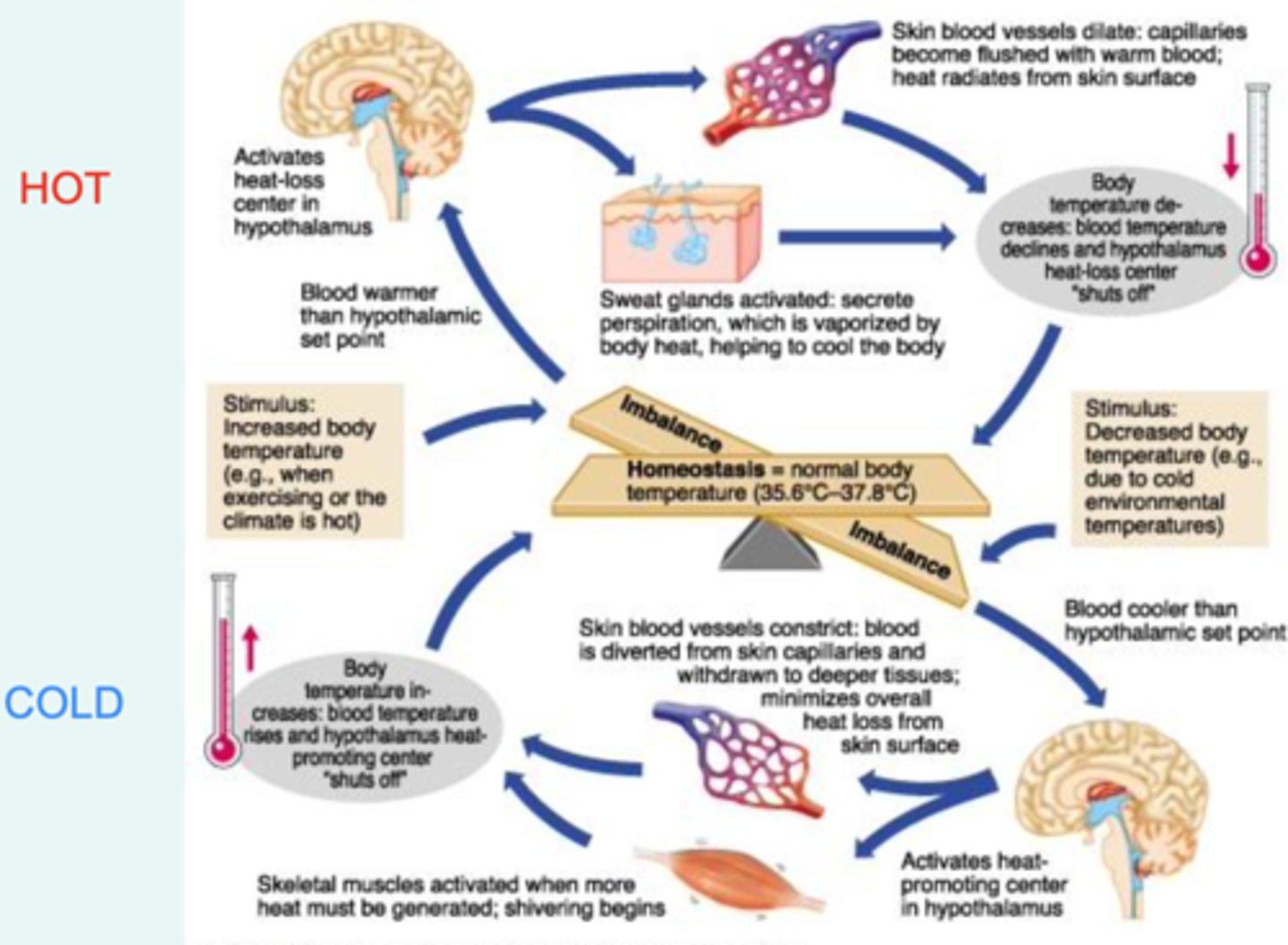
How does shivering increase heat generation from catabolism?
Shivering increases the need for ATP and in order to generate more ATP cells must undergo cellular respiration which releases a lot of energy and heat
What is BAT thermogenesis?
Basically, an inefficient form of cellular respiration that releases more heat than energy
Brown adipose tissue (BAT) is a thermogenic organ that protects the body from cold environment via dissipating chemical energy (lipids and glucose) as heat
What is thermoregulation affected by?
Both anatomical structures and behavior
What are some ectoterm behaviors actions that thermoregulate?
basking, crocodiles opening their mouth to cool themselves, cooling down in water, seeking shade
What are some endoterm behavioral actions that thermoregulate?
rolling in the mud, drying wings after swimming, sweating, clustering together
What are some ecoterm anatomical traits that thermoregulate?
shells that reflect sunlight, mucus layer that keep the skin cool
What are some endoterm anatomical traits that thermoregulate?
large ears for more surface area for cooling, layers of fur and fat, blubber, light fur coats that don't absorb the sun's energy
What does a specie's fundamental niche depend on?
Partly, on the adaptations they possess that can help them regulate their body temperature and stay hydrated (thermoregulation and osmoregulation)